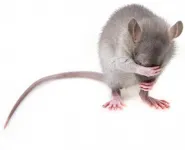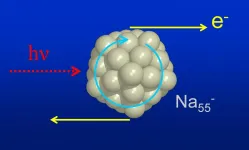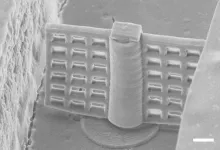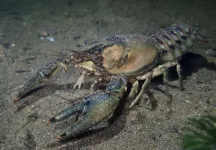Research papers that omit 'mice' from titles receive misleading media coverage
Study suggests relationship between how scientists communicate findings and how journalists report research to public
2021-06-15
(Press-News.org) There is increasing scrutiny around how science is communicated to the public, but what is the relationship between how scientists report their findings and how media reports it to the public? A study published in PLOS Biology by Marcia Triunfol at Humane Society International, in Washington, DC and Fabio Gouveia at Oswaldo Cruz Foundation in Rio de Janeiro, Brazil suggests that when authors of scientific papers omit the basic fact that a study was conducted in mice (and not in humans) from the article title, journalists reporting on the paper tend to do the same.
Alzheimer's Disease is an exclusively human condition that does not occur naturally in other species, but around 200 rodent models have been developed to study it. News stories frequently lead with headlines omitting that Alzheimer's Disease research findings are based on research using mice, not humans.
To test the hypothesis that how scientists report their research plays a role in the news reporting, the researchers analyzed 623 scientific papers published in 2018 and 2019 that used mice either as models or as the biological source for experimental studies in Alzheimer's Disease research. They then divided the papers into two groups; those that declared in their titles that mice were the study's main species, and those that omitted mice from the paper's title. The authors analyzed whether there was any difference between these groups regarding the number of news stories each paper generated.
The researchers found an association between articles' titles and news stories' headlines, suggesting that journalists tend to follow authors' decision to omit the species studied in the paper's title. They also found that papers not mentioning mice in their titles receive more press coverage and are significantly more highly tweeted than papers that do. The study had several limitations, including that the articles analyzed only included open access publications. Additionally, findings cannot be extended to other fields before a careful analysis is done.
According to the authors, "To our knowledge, this is the first study to present scientific evidence that the way science is reported by scientists plays a role in how journalists report science news. News stories' headlines that omit mice as the main study subject may mislead the public regarding the actual state of affairs in Alzheimer's Disease research while raising false hopes for patients and their families".
Dr. Triunfol notes, "We need to remember that most people only read the headlines of news stories. Thus, if the headline omits that the Alzheimer's study was done in mice, most keep the impression that the study findings apply to humans, which is not true. We now know that virtually all findings obtained in animal studies in Alzheimer's Disease do not replicate to humans".
Dr. Triunfol adds, "In a follow up study we will investigate why scientists choose to omit mice from their studies' titles. In this article we raised some hypothesis".
INFORMATION:
Research article
Peer-reviewed; Observational study; Studies
In your coverage please use these URLs to provide access to the freely available articles in PLOS Biology: http://journals.plos.org/plosbiology/article?id=10.1371/journal.pbio.3001260
Citation: Triunfol M, Gouveia FC (2021) What's not in the news headlines or titles of Alzheimer disease articles? #InMice. PLoS Biol 19(6): e3001260. https://doi.org/10.1371/journal.pbio.3001260
Funding: The authors received no specific funding for this work.
Competing Interests: The authors have declared that no competing interests exist.
[Attachments] See images for this press release:

ELSE PRESS RELEASES FROM THIS DATE:
2021-06-15
What will the Earth be like for our children and grandchildren, as temperatures continue to rise? We can be fairly certain of some things: Some regions will become inhospitable, as heat drives their inhabitants away or causes massive declines and changes in their ecosystems. Many other physical, chemical and biological processes will also be affected by rising temperatures that threaten critical ecosystem services such as food production, biodiversity and energy security.
But what these changes will be and exactly how they impact the Earth -- and ultimately us humans -- are still difficult to predict. Many of them are so gradual and happen over such a long timescale that they wouldn't be noticeable ...
2021-06-15
Federal agencies that regulate drug pricing and healthcare insurance are concerned that an industry practice of using rebates to lower drug costs for insurers has led to increases in list prices and out-of-pockets costs for patients.
To investigate whether patients with or without insurance were paying more because of rebates to insurers, researchers led by the University of Washington examined cost and price data on more than 400 branded drugs. The study found that rebates were associated with increases in out-of-pocket costs for patients by an average of $6 for those with commercial insurance, $13 for Medicare ...
2021-06-15
In 1943, two scientists named Max Delbrück and Salvador Luria conducted an experiment to show that bacteria can mutate randomly, independent of external stimulus, such as an antibiotic that threatens a bacterial cells' survival. Today the Luria-Delbrück experiment is widely used in laboratories for a different purpose--scientists use this classic experiment to determine microbial mutation rates. When performing the Luria-Delbrück experiment, scientists need efficient computer algorithms to extract reliable estimates of mutation rates from data, and they also need well-designed software tools to access these sophisticated algorithms.
Through the years, several web tools that allow researchers to more easily input and analyze data on a computer were developed to increase ...
2021-06-15
Photoemission is a property of metals and other materials that emit electrons when struck by light. Electron emission after light absorption was already explained by Albert Einstein. But since this effect is a highly complex process, scientists have still not been able to fully elucidate its details. Prof. Dr. Bernd von Issendorff and his team at the University of Freiburg's Institute of Physics have now succeeded in detecting a previously unknown quantum effect in the angular distributions of photoelectrons from cryogenic mass-selected metal clusters. ...
2021-06-15
Washington, D.C. - June 15, 2021 - Viral genome sequencing of wastewater can provide an early warning system of emerging SARS-CoV-2 variants that is independent of investigations of identified clinical cases, according to a new study published in mSystems, an open-access journal of the American Society for Microbiology. In the study, researchers describe the detection and quantification of variant B.1.1.7, first identified in southeast England, in sewage samples from London, United Kingdom before widespread transmission of this variant was obvious from clinical cases.
"Wastewater sampling and environmental surveillance ...
2021-06-15
Humans can do lots of things that plants can't do. We can walk around, we can talk, we can hear and see and touch. But plants have one major advantage over humans: They can make energy directly from the sun.
That process of turning sunlight directly into usable energy - called photosynthesis - may soon be a feat humans are able to mimic to harness the sun's energy for clean, storable, efficient fuel. If so, it could open a whole new frontier of clean energy. Enough energy hits the earth in the form of sunlight in one hour to meet all human civilization's energy needs for an entire year.
Yulia Puskhar, a biophysicist and professor of physics in Purdue's College of Science, may have a way to harness that energy by mimicking plants.
Wind ...
2021-06-15
Proper chromosome segregation into two future daughter cells requires the mitotic spindle to elongate in anaphase. However, although some candidate proteins are implicated in this process, the molecular mechanism that drives spindle elongation in human cells has been unknown, until now! Researchers at the Croatian Ruđer Bošković Institute (RBI) have discovered the exact molecular mechanism of bridging microtubules sliding and its role in proper distribution of genetic material during cell division. These latest results were published in the scientific journal Developmental Cell (IF: 10.092).
Cell division is a fundamental process required for stable transmission ...
2021-06-15
WASHINGTON -- Researchers have fabricated a magnetically driven rotary microfilter that can be used to filter particles inside a microfluidic device. They made the tiny turning filter by creating a magnetic material that could be used with a very precise 3D printing technique known as two-photon polymerization.
Microfluidic devices, also known as lab-on-a-chip devices, can be used to perform multiple laboratory functions inside a chip that usually measures a few square centimeters or less. These devices contain intricate networks of microfluidic channels and are becoming more and more complex. They may be useful for a variety of applications such as screening molecules ...
2021-06-15
Antidepressants can help humans emerge from the darkness of depression. Expose crayfish to antidepressants, and they too become more outgoing -- but that might not be such a positive thing for these freshwater crustaceans, according to a new study led by scientists with the University of Florida.
"Low levels of antidepressants are found in many water bodies," said A.J. Reisinger, lead author of the study and an assistant professor in the UF/IFAS soil and water sciences department. "Because they live in the water, animals like crayfish are regularly exposed to trace amounts of these ...
2021-06-15
Pharmaceutical pollution is found in streams and rivers globally, but little is known about its effects on animals and ecosystems. A new study, published in the journal Ecosphere, investigated the effects of antidepressant pollution on crayfish. Just two weeks of citalopram exposure caused changes in crayfish behavior, with the potential to disrupt stream ecosystem processes like nutrient cycling, oxygen levels, and algal growth.
Coauthor Emma Rosi, a freshwater ecologist at Cary Institute of Ecosystem Studies, says, "Animals living in streams and rivers are exposed to a chronic mix of pharmaceutical pollution as a result of wastewater contamination. Our study explored how antidepressant levels ...
LAST 30 PRESS RELEASES:
[Press-News.org] Research papers that omit 'mice' from titles receive misleading media coverage
Study suggests relationship between how scientists communicate findings and how journalists report research to public




